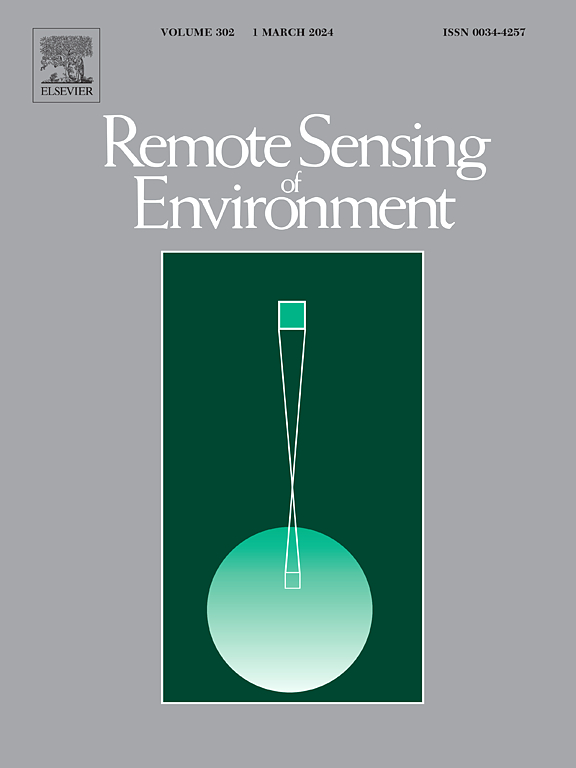Non-linear spectral unmixing for monitoring rapidly salinizing coastal landscapes
IF 11.1
1区 地球科学
Q1 ENVIRONMENTAL SCIENCES
引用次数: 0
Abstract
Coastal farmlands in the eastern United States of America (USA) are increasingly suffering from rising soil salinity, rendering them unsuitable for economically productive agriculture. Saltwater intrusion (SWI) into the groundwater reservoir or soil salinization can result in land cover modification (e.g. reduced plant growth) or land cover conversion. Two primary examples of such land cover conversion are farmland to marsh or farmland to salt patches with no vegetation growth. However, due to varying spatial granularity of these conversions, it is challenging to quantify these land covers over a large geographic scale. To address this challenge, we evaluated a non-linear spectral unmixing approach with a Random Forest (RF) algorithm to quantify fractional abundance of salt patch and marshes. Using Sentinel-2 imagery from 2022, we generated gridded datasets for salt patches and marshes across the Delmarva Peninsula, and the associated uncertainty. Moreover, we developed two new spectral indices to enhance the spectral unmixing accuracy: the Normalized Difference Salt Patch Index (NDSPI) and the Modified Salt Patch Index (MSPI). We constructed two sets of ten RF models: one for salt patches and the other for marshes, achieving high (>99 %) training and testing accuracies for classification. The consistently high accuracy and low error values across different model runs demonstrate the method's reliability for classifying spectrally similar land cover classes in the mid-Atlantic region and beyond. Validation metrics for sub-pixel fractional abundances in the salt model revealed a moderate R-squared value of 0.50, and a high R-squared value of 0.90 for the marsh model. Our method complements labor-intensive field-based salinity measurements by offering a reproducible method that can be repeated annually and scaled up to cover large geographic regions.
求助全文
约1分钟内获得全文
求助全文
来源期刊

Remote Sensing of Environment
环境科学-成像科学与照相技术
CiteScore
25.10
自引率
8.90%
发文量
455
审稿时长
53 days
期刊介绍:
Remote Sensing of Environment (RSE) serves the Earth observation community by disseminating results on the theory, science, applications, and technology that contribute to advancing the field of remote sensing. With a thoroughly interdisciplinary approach, RSE encompasses terrestrial, oceanic, and atmospheric sensing.
The journal emphasizes biophysical and quantitative approaches to remote sensing at local to global scales, covering a diverse range of applications and techniques.
RSE serves as a vital platform for the exchange of knowledge and advancements in the dynamic field of remote sensing.
 求助内容:
求助内容: 应助结果提醒方式:
应助结果提醒方式:


